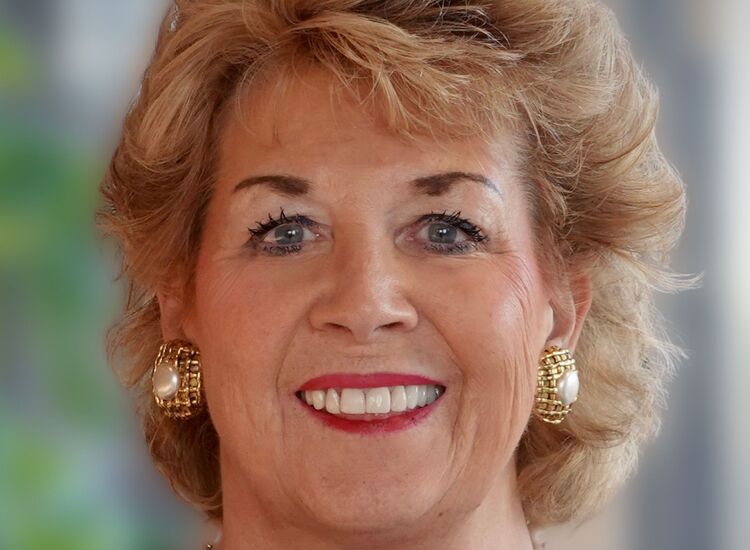The Bowne House is “a beautiful little home.”
So said Mayor Fiorella La Guardia in one of his famous broadcasts on WNYC. He said he’d been in old homes before, as part of his duties, and they, too, had old furniture. “I live in one,” he added, referring to Gracie Mansion, which he’d appropriated for use thereafter by the city’s first citizen.
“But, it’s different here,” he said, sitting in the front room of 37-01 Bowne St. in Queens, on Oct. 7, 1945. “You get the feel of peace and contentment and love and kindliness.”
In his introduction the announcer said it was the “54th day of a new world,” a reference to V-J Day in August and the conclusion of World War II.
Mayor La Guardia said that the house on the quiet block in Flushing didn’t just belong to the city, or to the state, or to the country.
“It belongs to the world, for what took place here is what the world is looking for,” he said of a place that was an improvised meeting house of the Society of Friends, or Quakers, the first recorded in the American Colonies, beginning in or around 1661.
In La Guardia’s time, two unmarried sisters, the ninth generation, were there to greet him; it was billed as the longest occupancy by the same family in any dwelling in America. The then elderly social activists Anna Parsons and Bertha Parsons were clear that the Bowne House should be a museum and made arrangements for that eventuality. Indeed, the family had been in preservation mode since the mid-19th century, being aware of its significance to American history.
The specific occasion of the mayor’s radio address, though, was the 300th anniversary of the Flushing Charter, which guaranteed religious freedom or, as they called it in 1645, “liberty of conscience.”
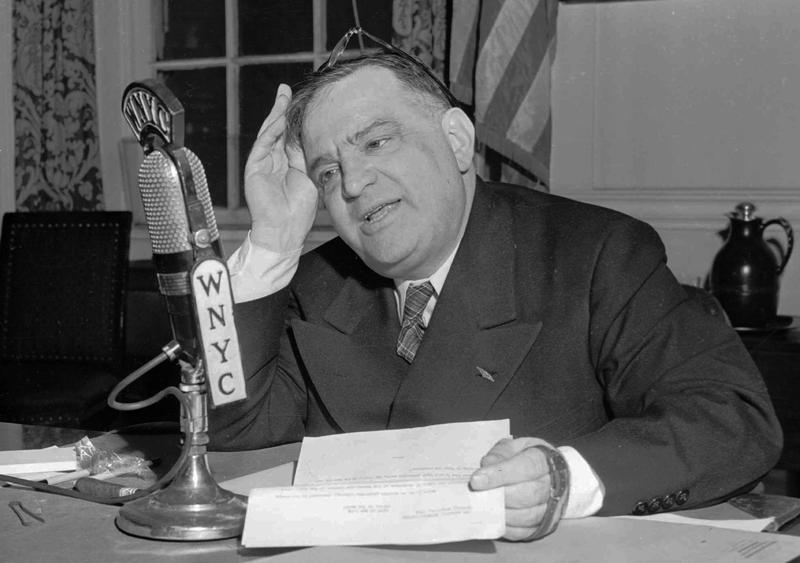
Mayor La Guardia.
According to bownehouse.org, “Director General Willem Kieft of the New Netherland colony granted 18 mostly English settlers the right to found a town on the western end of Long Island. The Flushing Charter, also known as the Patent of Flushing, was a contract between the Dutch authorities and the new owners of the land.” The website notes that the guarantee to its residents’ liberty of conscience was “a rare offer of tolerance in an era beset by Europe’s religious wars.”
It was local events that took place in the early 1660s that put the Bowne House on the map, historically speaking. Things, though, were obviously heating up because in 1657, eight of the original 18 Flushing settlers signed the famous Remonstrance, which reminded the Dutch governor, Peter Stuyvesant, of his obligations according to the 1645 document.
However, Stuyvesant, a believer in the supremacy of the Dutch Reformed Church, had curtailed the liberties of Lutherans; he was additionally an overt antisemite who denied Jews the rights they had in Holland and tried to prevent their entry to the colony; he then clamped down on the Society of Friends, ordering the public torture of a young preacher, Robert Hodgson, and made it a crime to harbor Quakers. In fact, he used laws that had long been a “dead letter” back in Holland, as La Guardia said, to marginalize alternative forms of religious expression in the New World.
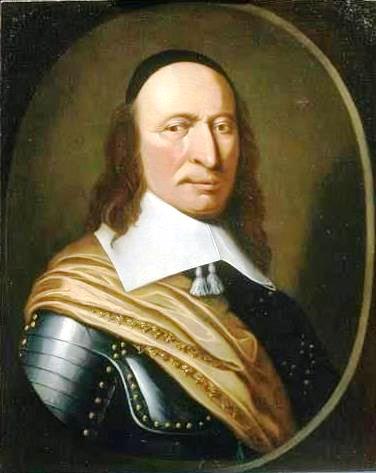
Peter Stuyvesant.
This is where John Bowne comes into the story. Bowne House’s educator Emily Vieyra-Haley told me when I visited a few weeks back that we don’t know when it was built, but the 1661 date is the earliest mention of it in Bowne’s papers. In 1662, five years after the Remonstrance, he got into serious trouble for providing local Quakers with a place to meet.
“John Bowne lived his religion, he didn’t only preach it,” Mayor La Guardia said sitting in the front room where Stuyvesant’s men had come to arrest him 284 years before.
Born in Matlock in 1627, he left England for Boston with his father and sister in 1648. His home county of Derbyshire was later a stronghold of Quakerism, but Bowne became a Quaker in America after his marriage to Hannah Feake, a convert who had been born into a well-connected New England family, and had grown up in Greenwich, Connecticut, on the borderlands between English and Dutch America.
Mayor La Guardia noted in his address, “Sometimes there is no one more intolerant than the tolerant.” He meant many who’d fled to the Colonies seeking freedom from persecution were quick to repress those among them who adhered to a different brand of dissent, such as Quakerism. And so, some Quakers moved south to New Netherland hoping for greater freedom.
Quakerism was known for its female itinerant preachers, and Hannah Bowne built on her Dutch-language skills acquired in childhood while spreading the word in Holland. In his eulogy upon her death in 1678, John said she also walked “1,000 miles” in Ireland.
Emily is attuned to the Irish aspects to the story, given her own background. Her father is from Buenos Aires, and he left Argentina for New York in 1965 to work for TWA Airlines; her mom, Catherine Donovan, was an Irish New Yorker; Catherine’s cousin was the Echo Irish-language columnist Barra Ó Donnabháin, who is also deceased. Catherine’s dad Daniel and Barra’s dad Jerh were brothers from Léim Uí Dhonnabháin, or Leap, Co. Cork.
Emily has another connection to the paper in me – I’ve known her as a friend for a number of years. So, when I say she does a wonderful job interweaving the great American story with the domestic aspects of the Bownes’ history over nine generations, you might think I’m biased. But you’ll likely get some sense of just how well Emily and the team led by executive director Elise Helmers do by streaming the hour-long episode of “Treasures of New York” about the museum that was first broadcast two weeks ago on local PBS station WLIW.
Bowne House is a treasure, and it contains its own set of treasures. As Emily said, “The Quakers were great recyclers, they didn’t throw a lot out.” The knocker on the door, for example, was once a stirrup. My own favorite movable object is just about the largest -- the clock bought by Samuel Bowne, who was John and Hannah’s sixth child, and second son and heir. But there is also the table top brought from Matlock, presumably because it had some sentimental value, and John’s father’s walking stick.
The table top and walking stick were there then when Stuyvesant’s men came for John Bowne (his name rhymes with John Browne). It was late and a long way back to Lower Manhattan; so, they spent the night.
“It must have been extremely awkward,” Emily said of the armed group staying with the couple and their young children.
According to LaGuardia, “Bowne proved himself a most inconsiderate prisoner.” He refused to repent or pay fines after a month’s imprisonment and was banished.
In Holland, Bowne made his case to the Dutch West Indies Company by citing the original Flushing Charter, and was successful.
In that period abroad, Bowne first made his acquaintance with the Quakers in Ireland. He recorded, “I was kindly received and entertained.” Later on, Hannah’s “1,000 miles” was likewise taken up with the visiting of fellow members of the Society of Friends, rather than preaching as she was to do in England as well as Holland.
Charlotte Jackson, Bowne House’s archivist – with the assistance of collection volunteer Ellen Spindler – has been transcribing the available documents about their sojourns to Ireland, including diary entries by John and letters sent by friends to Hannah, who had a miscarriage in Dublin.
So, what was the backdrop to the Quaker world the Bownes experienced in Ireland? I asked this question in an email to Steven C. Smyrl, author of “Dictionary of Dublin Dissent,” subtitled “Dublin’s Protestant Dissenting Meeting Houses, 1660-1920,” which was described in an Irish Times review in 2010 as an “extraordinary reconstruction of the evolution of the city” and “incredibly rich in detail.”
Smyrl replied, “The Quakers established themselves in Ireland just as the turmoil of the Cromwellian period came to an end in 1660. With the return of the monarchy, and the formal re-establishment of the Protestant episcopal church in Ireland, like all other ‘dissenters’ they soon found themselves out of favor with the civil authorities. The Quakers’ refusal to swear oaths or pay tithes towards the upkeep of the clergy of the state church soon singled them out, above all other dissenters, as troublemakers. Thus, the early years of Irish Quakerism can be characterized as ones which found them bitterly pitted against the application of certain aspects of civil and judicial authority.”
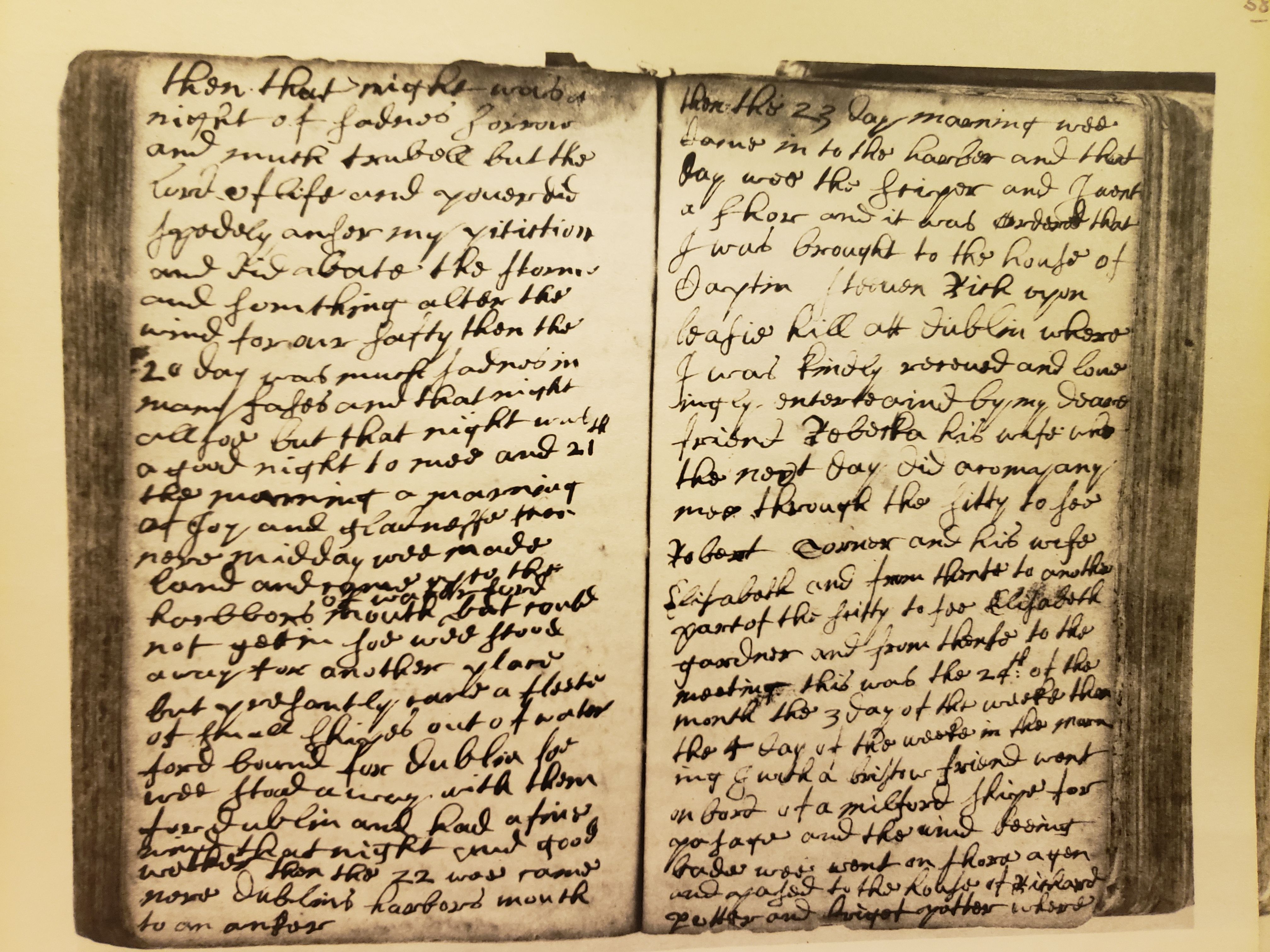
Pages from John Bowne’s journal written during a visit to Dublin.
John Bowne had certainly been a troublemaker in New York, and his descendants would involve themselves in what the late Congressman John Lewis called “good trouble” over the years. While in the earlier generations the family were slave owners, the lineage was later identified with the militant embrace of abolitionism. This was the case after Quaker minister Samuel Parsons married Mary Bowne in 1806. And that story, involving the Underground Railroad, is well told at the Bowne House and in the PBS show about it. (The “Treasures of New York” episode also discusses Black Dublin, an integrated Flushing neighborhood in the 19th century.)
Bowne/Parsons descendants of the last generation, the world-traveling Anna and Bertha, were very socially aware and active. Anna, for example, served as an officer with the Flushing Female Association and Bertha was president of the Flushing Workers Association.
The Bowne House’s website comments that while John Bowne’s historic role is celebrated, a remarkable line of women from Hannah Feake to Anna and Bertha Parsons is also showcased. The website says, “These women preachers, world travelers, philanthropists, social reformers and preservationists made a significant difference outside the spotlight reserved for men.” (See also the sidebar below about the Bowne House's caretaker: "Historian minds historic house")
In commemoration of the 250th Anniversary of the Boston Tea Party, the Bowne House is hosting Afternoon Tea on this Sunday, Dec 17. Attendees can “learn about this historic event while enjoying tea and treats in an early-American home,” from 2 to 4 p.m.
The Bowne House is open every Wednesday from 12 pm to 4 pm. During these hours, tickets can be purchased at the door and no advanced registration is required. Tours will be offered at the start of each hour. Visitors can also schedule tours outside of the regular open hours. Go to the website here for more information.
The Bowne House Historical Society, a non-profit formed in 1945, manages the house and owns its furnishing, archives and artifacts, and is responsible for the educational mission and programs of the museum. The house was donated to the City of New York in 2009 for the sole purpose of restoring the structure so that it could operate as a museum.
--------------
Historian minds historic house / By Peter McDermott
Stefan Dreisbach-Williams must have seemed the ideal candidate for the position of caretaker at the Bowne House. For one thing, he was raised Quaker and educated in Quaker schools. “It’s been a big part of my life and it definitely shapes who I am,” he said.
Secondly, he has volunteered for and worked in museums since he was 12, with his favorite being the Center for Wooden Boats in Seattle. “I just think it’s one of the best places in the world,” he said.
And that provides a hint as to what the clincher was when, ideal candidate or not, he was looking to see if the job felt a “good fit” for him personally. He found it on a visit to the Bowne House in which he saw an interesting reference to the maritime history of 19th-century New York.
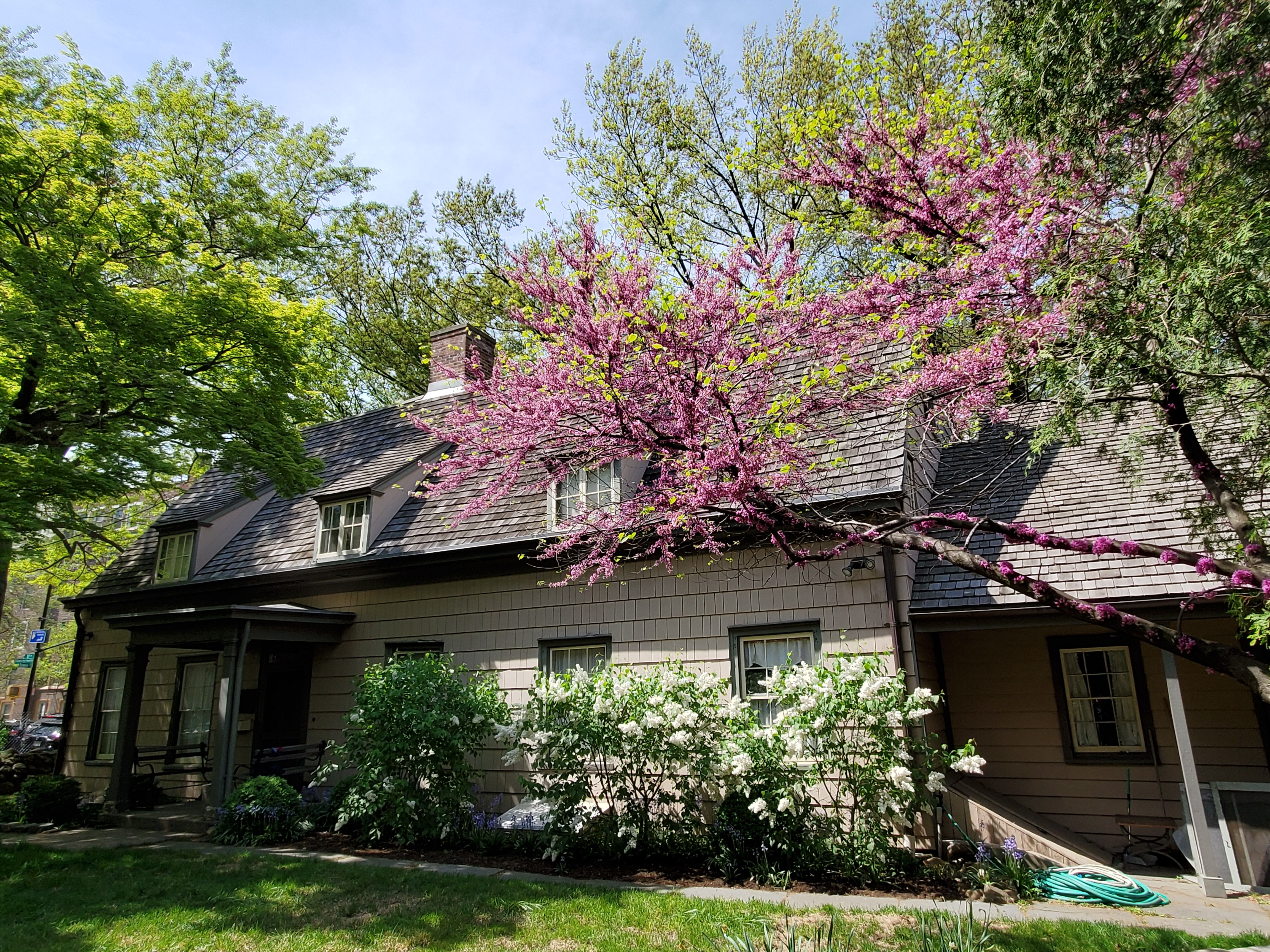
A view of the Bowne House. [Photo by Elise Helmers]
“The Bowne family has had its toe in just about everything that has happened in this city,” Dreisbach-Williams said.
He is by day a public historian of New York Harbor, dividing his time between two paying jobs, one as archivist for the Seaman’s Church Institute, and the second as -- and this requires a knowledge of the Irish in New York -- collections specialist for the Waterfront Museum.
Dreisbach-Williams took on his unpaid caretaker job in January 2020. “Which was an exciting time,” he said, wryly. He’s been staying there overnight since, except when a friend minded the house and his cat while he attended a week-long conference.
Aside from such tasks as raking the leaves and mowing the lawn, his duties include: “Being present, letting the community know there’s someone in the house, reassuring everybody it’s not vacant.
“Talking to people on the street, reminding it’s a place they can visit.”
He, for his part, is, “knocked out by the community, particularly in the park [Margaret Carman Green] next door. It’s one of the most well-used parks I’ve seen in my life. It serves every need for the community. I love the diversity. It’s such a vibrant place.”
Dreisbach-Williams must also communicate with the powers that be, such as the Historic House Trust and the Parks Department, what the Bowne House’s needs are.
“This is an old building that requires a lot of care,” he said.
Almost always the first question people ask him is: “Are there any ghosts?”
His response is invariably the same: “I don’t look for them.”
Other than when the yard cats (they’re all named by him for tugboats) are waging their successful war on rats, he finds the same peace and contentment that Mayor La Guardia referred to in his 1945 radio broadcast from the Bowne House.
Dreisbach-Williams is aware that people “are looking for some kind of direct connection when they go to history sites, some way of bringing the past alive.” He’s found his in the Bowne House’s link to a 17th-century religious leader drawn to it by John Bowne’s reputation.
“Having been raised Quaker, it’s kind of wild to know that George Fox likely laid eyes on the house,” he said. “If you’re going to declare anyone a founder, that’s George Fox. He was a pivotal figure in the early days of Quakerism. There are family stories that he slept at the Bowne House or at least took a nap there. That may not be verified. The fact is, he passed right by it. He was right there. That’s a real special feeling.”


